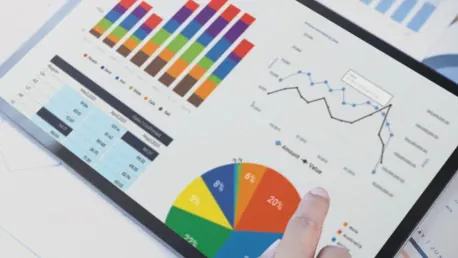In the fast-paced and competitive business environment, precise and unbiased forecasting of consumer demand is crucial for sustained growth and success. Traditional statistical models have often relied on assumptions that introduce biases and errors in data analysis. However, a revolutionary approach known as the Science-of-Counting (SoC) offers businesses a more accurate and exact method for analyzing data and forecasting trends. This article explores the fundamental principles of SoC and its transformative potential in business demand forecasting.
The Fundamentals of Science-of-Counting (SoC)
Understanding the Basis of SoC
Science-of-Counting (SoC) operates on the principles laid out in E.T. Jaynes’s “Probability Theory: The Logic of Science,” with a focus on the maximum entropy principle. This methodology emphasizes exact counts and their inherent precision. The basis of SoC is to handle business data such as customer counts, inventory levels, and sales figures as precise quantities, eliminating the need for modeling assumptions. By adhering to exact counting, the methodology circumvents potential biases and errors that often plague traditional statistical methods, especially those reliant on equilibrium conditions and broad probability distributions.
Unlike traditional statistical methods, which often require equilibrium conditions and suffer from wider probability distributions, SoC leverages the exact nature of counts to deliver unbiased measurements. This approach is particularly beneficial in real-world scenarios where data is rarely in equilibrium and can exhibit non-linear behaviors. Essentially, SoC provides a more versatile and robust alternative for analyzing time-series data by focusing on factual, count-based metrics rather than predictive models that may not account for irregularities in business dynamics.
Data Processing Through Cloud Services
Businesses can benefit from SoC by uploading their time-series data to cloud services like those provided by Precision Insight. These services apply SoC methodologies to analyze the data, offering exact scientific measurements and ensemble forecasts. This cloud-based approach ensures that businesses have access to precise forecasting tools without requiring extensive in-house computational resources. Leveraging the power of cloud technologies, companies can seamlessly transition from traditional analytical methods to more refined and effective SoC-based analysis with minimal technical overhead.
Cloud services processing the data through SoC methods provide a streamlined way for businesses to gain insights. This includes identifying patterns, predicting future trends, and pinpointing potential turning points in consumer behavior. By leveraging cloud-based SoC, companies can achieve enhanced analytical capabilities that go beyond traditional statistical analysis. As a result, businesses not only gain more accurate insights but also benefit from the scalability and accessibility of cloud solutions, which facilitate continuous improvement in demand forecasting and decision-making without significant capital investment.
Application of Scientific Measurements
Energy and Momentum in Data Analysis
One of the core elements of SoC is the integration of scientific measurements such as energy and momentum into business data analysis. In time-series data, energy measurements can indicate the intensity and stability of trends. Momentum, on the other hand, provides insights into the sustained direction of these trends. This scientific approach allows businesses to understand not just the current state of their market but also anticipate future movements with greater accuracy. By leveraging these concepts, companies can gain a more comprehensive view of the market dynamics that influence consumer behavior.
This scientific approach allows businesses to understand not just the current state of their market but also anticipate future movements with greater accuracy. By identifying peaks and troughs in energy within the data, businesses can better predict upcoming turning points. This proactive approach enables companies to adapt their strategies in alignment with expected market changes. For instance, a sudden drop in momentum could indicate a forthcoming decline in sales, prompting a business to revise its marketing efforts or adjust inventory levels to mitigate potential losses.
Active Listening for Market Trends
Active listening, as applied in SoC, involves monitoring the energy profiles within time-series data to predict changes. When the incoming or outgoing energy reaches peak levels, it suggests potential shifts in consumer behavior. This method of listening enables real-time insights and can guide timely decision-making. By employing active listening, businesses can stay ahead of market trends and respond swiftly to evolving customer demands, thereby gaining a competitive edge.
For example, a retailer might detect a peak in the energy profile of a particular product category, indicating heightened consumer interest. By leveraging this insight, the retailer can adjust inventory levels, launch targeted marketing campaigns, and optimize sales strategies to capitalize on the trend. This proactive stance not only enhances operational efficiency but also boosts customer satisfaction by ensuring that popular products are readily available, thus fostering brand loyalty and encouraging repeat business.
Enhancing Business Decision-Making
Precision in Forecasting
The precision offered by SoC extends beyond mere data analysis to encompass future forecasting. Traditional statistical methods often produce wide probability distributions, leading to less reliable predictions. In contrast, SoC’s exact counting method results in narrower and more accurate forecasts. This precision is crucial for businesses planning long-term strategies, as it allows them to minimize risks and make well-informed decisions that drive growth and profitability.
This precision is crucial for businesses planning long-term strategies. For instance, manufacturers can use precise forecasts to manage production schedules effectively, minimizing waste and optimizing resource utilization. Similarly, retailers can stock their shelves more efficiently, ensuring availability while reducing excess inventory costs. Additionally, service-based companies can use SoC to predict fluctuations in customer demand, allowing them to allocate resources more effectively and enhance service delivery.
Adapting to Non-Linear Behaviors
Real-world business data often exhibits non-linear behaviors that traditional statistical models struggle to accommodate. SoC’s adaptability to non-equilibrium and non-linear data ensures that businesses can analyze and forecast trends accurately regardless of the complexity. This flexibility is particularly valuable in today’s dynamic market environment, where consumer preferences and external factors can shift rapidly, rendering traditional forecasting methods less effective.
By accommodating non-linear behaviors, SoC helps businesses in various sectors from retail to manufacturing to services. For example, a service-based company can evaluate variations in customer demand during different seasons and adjust staffing levels accordingly. This adaptability leads to more efficient operations and better customer satisfaction. By recognizing and responding to the non-linear nature of demand, companies can optimize their strategies and ensure that they remain competitive and responsive to market changes.
Practical Applications of SoC
Consumer Demand Surveys
One practical application of SoC is in analyzing consumer demand surveys. By applying precise counting methods, businesses can derive momentum and energy trends from survey data. This analysis helps in predicting consumer preferences and identifying shifts in market dynamics. Companies can leverage these insights to fine-tune their marketing strategies, product development, and overall business operations, ensuring that they align with evolving consumer demands and trends.
Consumer demand surveys analyzed through SoC provide actionable insights that can be used to develop targeted marketing strategies. For example, an electronics company might identify an uptick in demand for smart home devices through survey analysis. This insight allows the company to tailor its product offerings and marketing efforts to meet emerging consumer needs. By focusing on these precise and actionable insights, businesses can better allocate resources, design more effective campaigns, and ultimately enhance their market position.
Inventory Management
In today’s fast-paced, competitive business landscape, accurately forecasting consumer demand is key to long-term growth and success. Traditional statistical models have often presented challenges, as they frequently rest on assumptions that can introduce biases and errors into data analysis. These inaccuracies can lead to flawed forecasts and misguided business strategies.
Enter the Science-of-Counting (SoC), a revolutionary approach that promises a more precise and less biased method for analyzing data and predicting trends. SoC deviates from conventional statistical methods by minimizing assumptions and honing in on the raw numbers, offering a clearer, more reliable picture of consumer behavior. This article delves into the core principles of SoC and its groundbreaking potential for transforming how businesses anticipate and respond to market demand.
By employing SoC, businesses can tap into a new level of forecasting accuracy, allowing for better-informed decisions and strategic planning. This method’s emphasis on unbiased data analysis not only refines predictions but also equips businesses with the insights needed to stay ahead of the competition. With SoC, companies can navigate the complexities of consumer demand with a degree of precision previously unattainable, ensuring sustained growth and competitive advantage in a volatile market.









